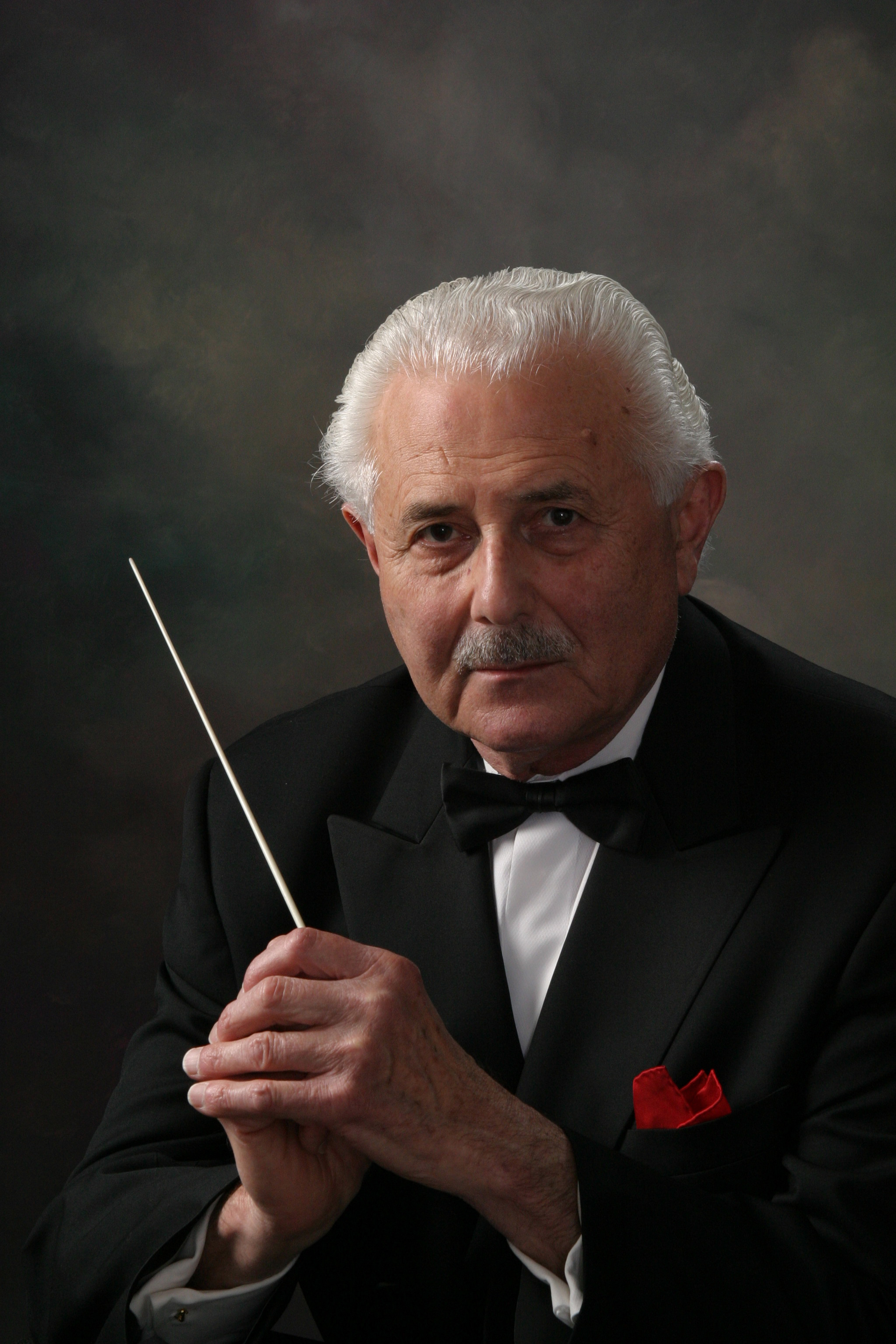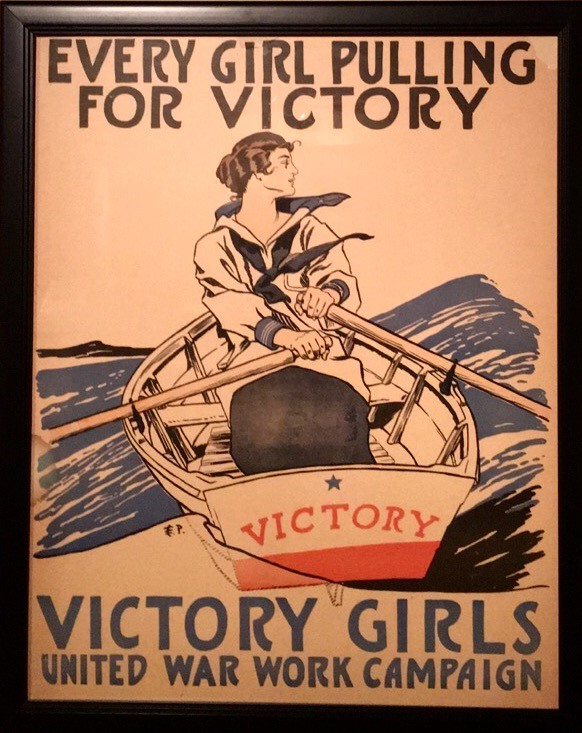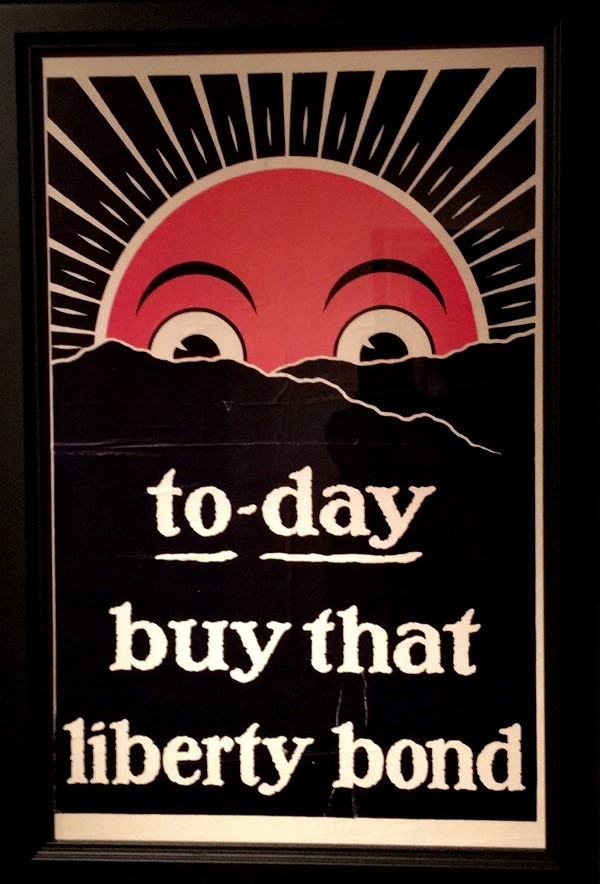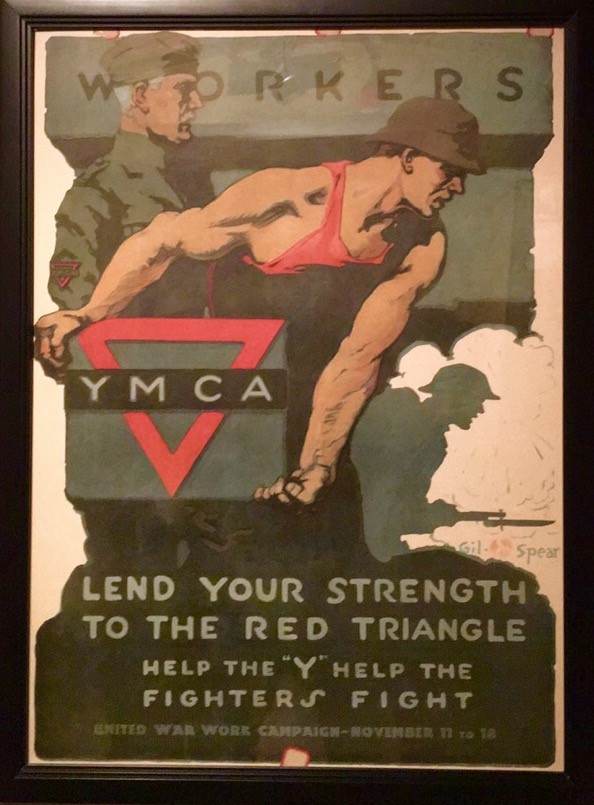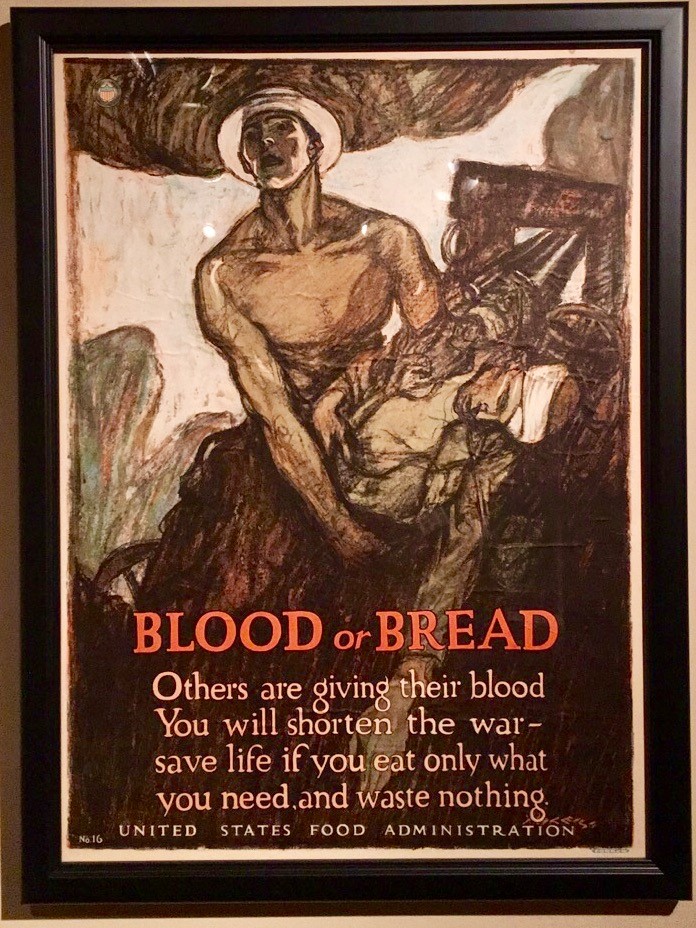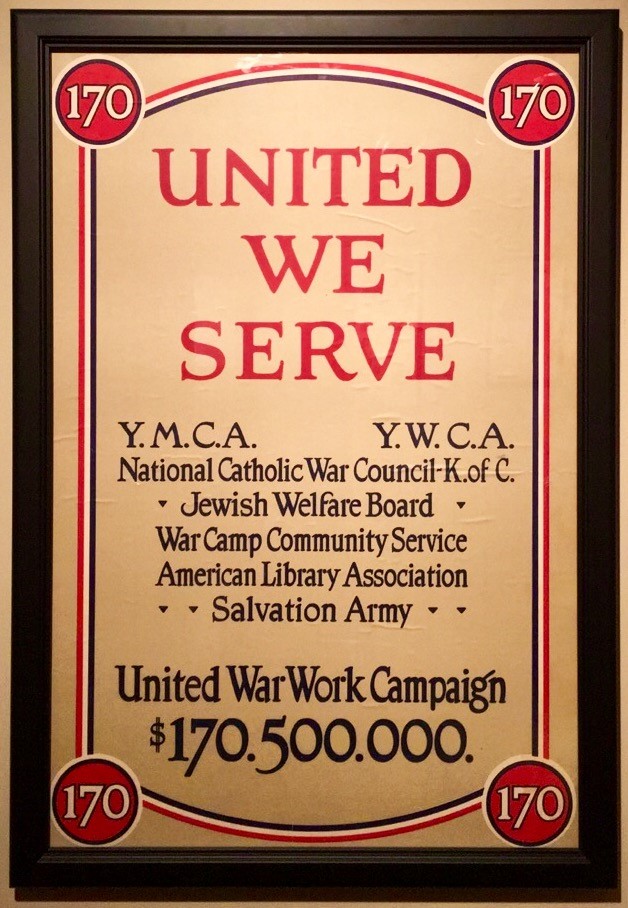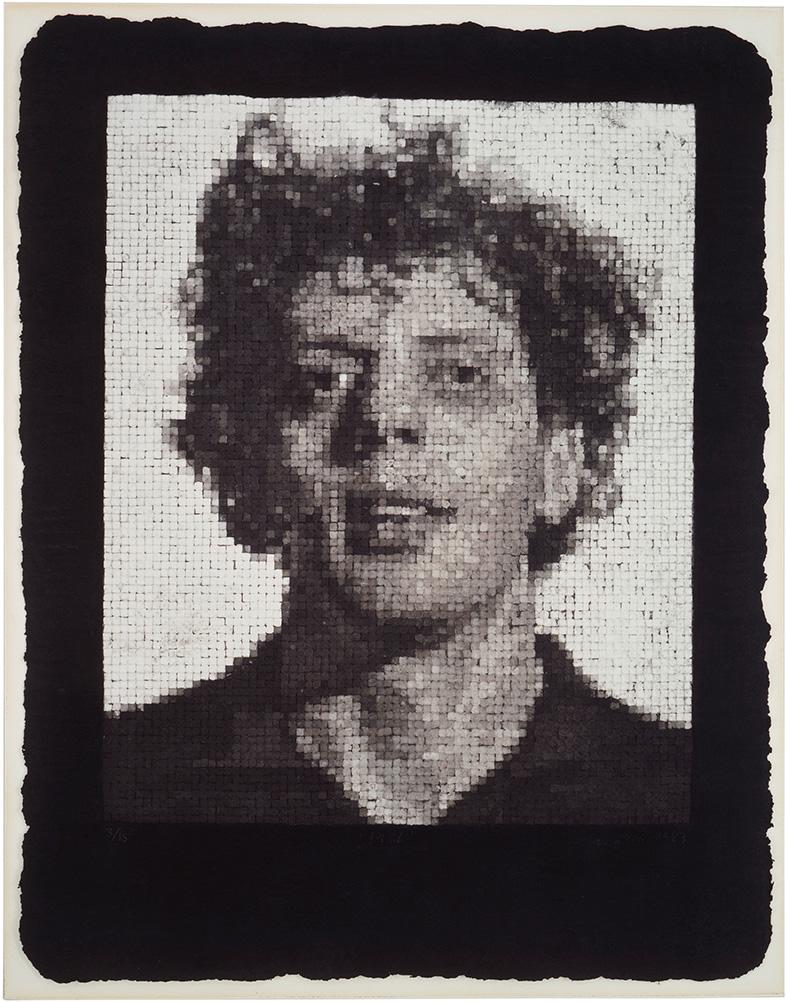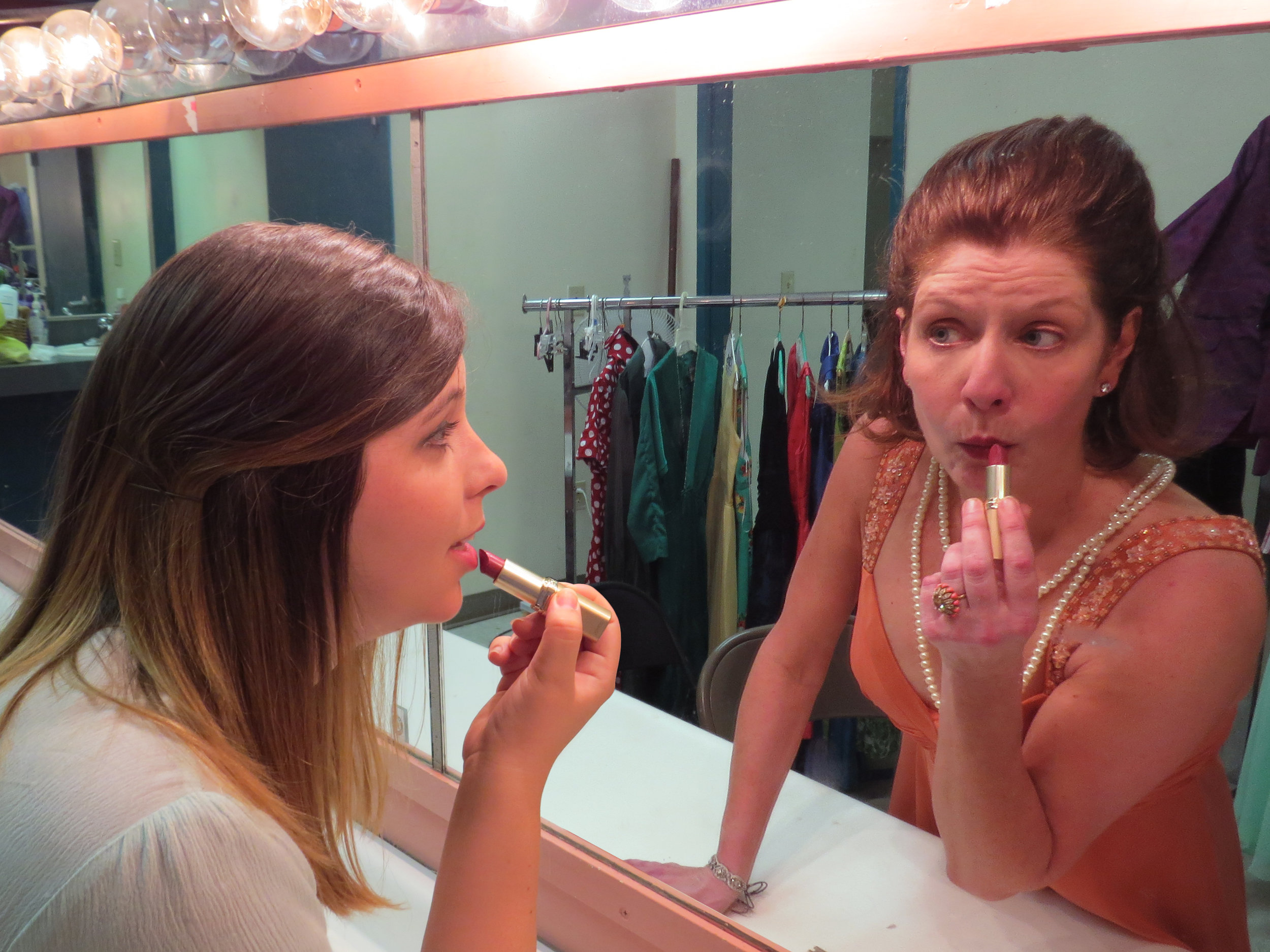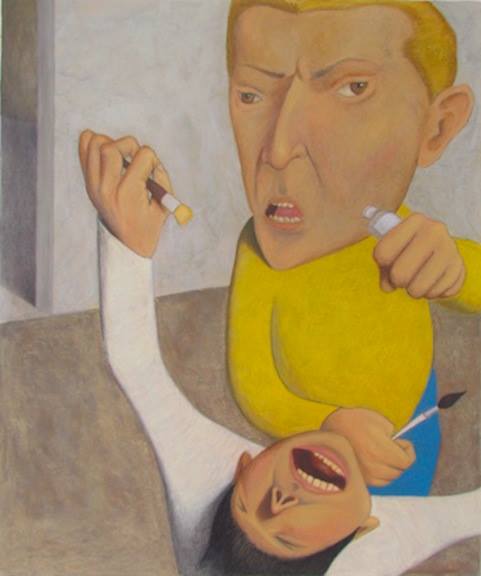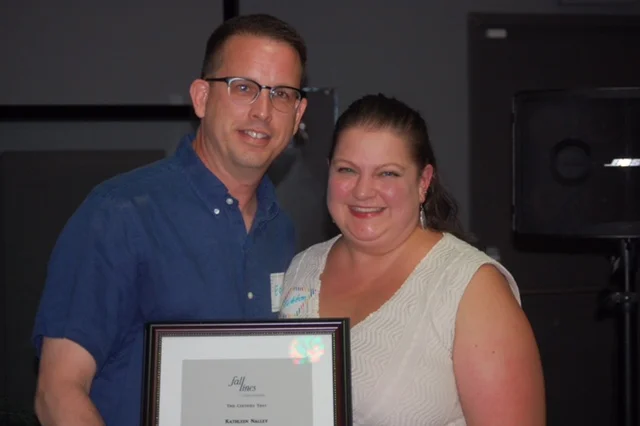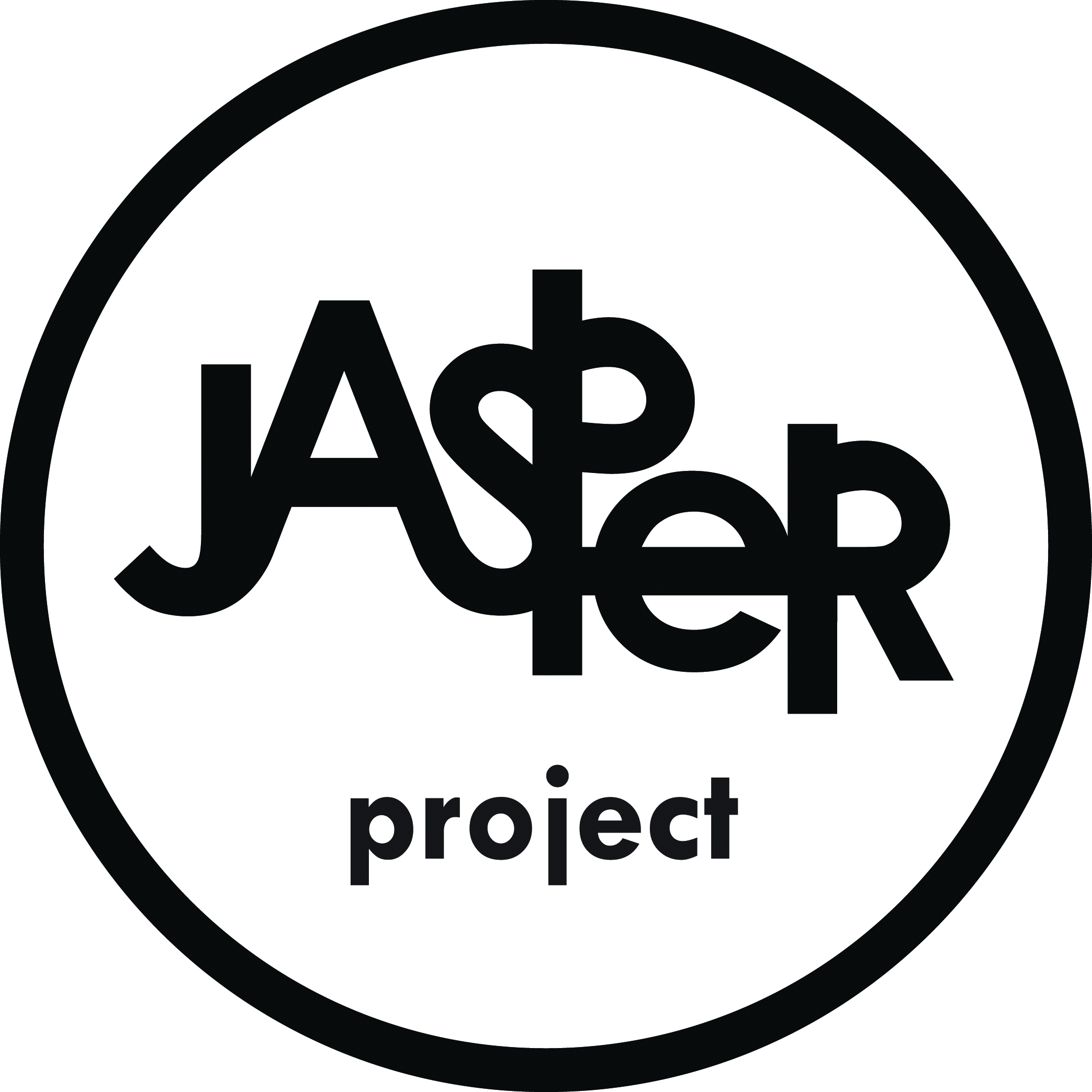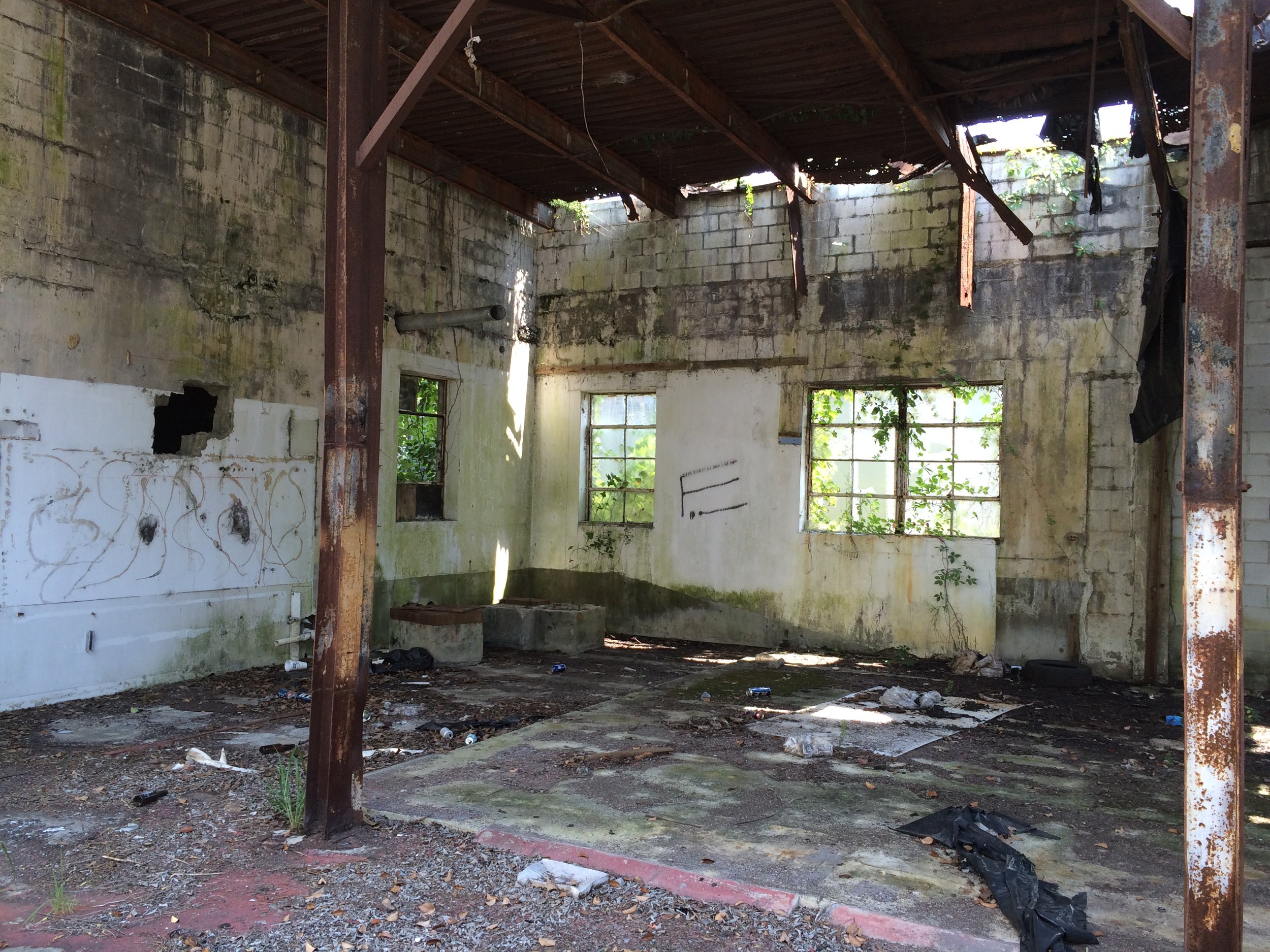by Mary Catherine Ballou
Over the summer, a mural emerged on one of the exterior walls of Trenholm Plaza, a shopping center located in the heart of Forest Acres. Before its appearance, few examples of public art existed in this area. Upon discovering this intriguing abstract rendering, Jasper intern Mary Catherine Ballou conducted with the mural’s artist, Paul Yanko.
Commissioned by EDENS (the longtime Trenholm Plaza property owners), Greenville-based artist Yanko painted the mural with help from his wife, artist Enid Williams. Yanko, an accomplished abstract painter and visual art teacher at the South Carolina Governor’s School for the Arts and Humanities (where he has been teaching for 13 years), completed the mural over the course of three months, working through the scorching heat from June through August to bring a lively and colorful display of public art to the community.
In the following interview, Yanko kindly provides information about his artistic history, how the mural developed, and his hopes for the mural’s impact on the community at-large.
Jasper: Please tell us about your artistic background.
Yanko: “I am originally from Northeast Ohio and I relocated to South Carolina in 2004 to teach full time at the South Carolina Governors School for the Arts and Humanities. Prior to moving, I attended the Cleveland Institute of Art from 1986 to 1991. I received a BFA in 1991 in Illustration, then I went back to graduate school to pursue an MFA in Painting, which I received in 1995. Upon receiving my MFA, my wife, Enid Williams (Visual Arts Instructor at Greenville Technical College), and I occupied a studio in Ohio for eight years, so we really built our careers in Northeast Ohio, exhibiting regionally and nationally. Then we moved to South Carolina…and have continued to exhibit regionally and nationally.”
Please describe your artistic process – what inspired you to create this mural?
“That place [Trenholm Plaza] was designated by the property management company [EDENS], [but] the project was delayed slightly because of the flooding [in October 2015]. I made an initial visit to the site [during the summer of 2015], just to get a firsthand sense of the scale and overall surroundings. That was [with] Mary Gilkerson from One Columbia and also a faculty member from Columbia College. We made a time to meet up and I visited the Plaza in July of 2015 and got a sense of the actual dimensions and scale. I was impressed with the renovations that had taken place in the Plaza. I was struck by the combination of materials used – the wood combined with some of the tiling, and gridded meshed columns…with vines trailing up. I was just kind of taking in everything that my first impressions were giving me, along with the fact that EDENS was looking for somebody [with] very broad, very open parameters…something very upbeat, lively. I appreciated the fact that they weren’t requesting something so specific – it was open to 3D work as well – but for me as a painter, my response, my considerations for the proposal shifted to my area of expertise.
I started thinking about a palette – I recalled some site-specific works that I did in the early 2000s – 8-hour drawings at a college in Pennsylvania [and] 48 hours of making art [at] another college…[we were] given a weekend to camp in the gallery [and] assigned an area to create a work in 48 hours. I collected an assortment of rollers, brushers, miscellaneous paints, ladders, and just rolled up my sleeves and got to work on it – 15 feet by 15 feet...You just have to plan and execute – it’s a very different way of organizing your time and activates compared to what you might typically do in the studio.
Those earlier projects provided a kind of frame of reference for this project. I went back to using rollers in various sizes, lots of masking tape, a level, straight edges – pretty simple, straightforward tools. It just became a matter of chalking off lines with Enid’s help – she was a big help on this project. Once I did the layout, she or I would come back and tape and start rolling in those areas with an assortment of latex colors – gallon quantities of commercial latex paint – just to ensure there would be enough material for the size of the project, [and] organized a pallet of about nine colors. I wanted the palette to correspond to impressions, sensations that I had taken in from the environment, also keeping in mind the location of the mural. That particular context had a big drive in my palette. [Then] I presented a proposal, artistic background, concept budget, and loose timetable for executing the work…
My current work in the studio – the process I employ of layering, masking, [and] building surface qualities guided my direction for the decisions for the proposal…kind of a combination of some previous installation projects. Also, Enid and I executed a large mural in a public recreation center in the late 90s – we did that collaboratively so there were some past instances, but it also relates to my thought processes in the studio and on canvas.”
How different is it planning and painting an outdoor public mural compared to an in-studio piece?
“There’s certainly an awareness that’s timed in the studio [but] you do have to think about time differently [when working outside in a public space]. There’s a dry time [and] there are considerations about weather conditions. I also teach full time, so the summer was really the only time to have this kind of continuity, opportunity to work – so summer just became the time to do or die. My schedule is pretty…regimented anyway – it definitely has to be that way with the mural – [taking into consideration] traffic, do I have enough water, do I bring a lunch, do I have the right supplies because it’s not easy to stop. It’s a little bit like comments I’ve heard from friends and family who do a little bit of backpacking [or] camping, in the way you have to organize yourself and get materials ready for the day, preplanning the night before. Oftentimes our conversations for the day would be ‘We’re going to do the gray, blue, orange [colors today]…’”
How would you describe the experience of painting a mural in such a public forum? What’s the status of the mural now?
“It’s done – we made a big start in June – then we worked quite a bit through July on the project, and a little bit in August – just tried to consider the weather and timing. It has been an exceptionally hot summer – no big surprises there. We timed it for working a little bit earlier in the afternoon, so that was most productive for us. We’ve been connected, been a part of the Columbia art scene for many years, [but] we decided to commute back and forth on the project. I think having some time in-between the sessions of painting were helpful – just to think about other projects…in the studio [and] exhibitions to prepare for this summer. It was a little bit of a juggling act. That led me to titling the piece “Balancing Act”, which refers to time on the project, referring to what’s occurring in the mural itself – interaction of color and shape, how some of the elements seem to be leaning and precariously placed, buttressed by others, and (thirdly I would say) it makes a reference to the activity, the conversations that I was sort of exposed to, the clients, the patrons of the plaza.
When you’re working on a mural, you’re kind of on a rail like the track of an old electric typewriter – you’re going back and forth, up and down, back and forth, so you’re on this track while you’re working and this current of people [are] behind you in the Plaza. It doesn’t stop – you overhear folks talking about their schedule for the day or picking up outfits – there’s this current in life moving on around you. I think it might have been designated as a Pokémon hot spot – I saw a few younger kids face down following their phones stopping by the mural. So there’s a little cultural thing going on – everyone will remember that was the summer that went on. It’s very different working privately in the studio – a lot of questions were presented [and] the public couldn’t have been more supportive. They had great questions, interest, enthusiasm for the project – they felt it was a favorable addition…”
How would you describe this mural? What feelings or emotions do you hope to convey through the mural?
“It’s abstract, a configuration of color, shape, using a simple vocabulary to build layer into something complex – it’s just taking in impressions and recreating those in a language of color and shape. I used to title old paintings [for example] ‘Old Section, New Section’, [like the process of] building in a community – I sort of see this corresponding to my project. I was really impressed to learn about what the Plaza meant to the community in the past – how this…is a real renovation template for EDENS, it seems to have gotten a revitalized interest and strong support from the community. The general public was great – I got responses and remarks from small children to teens to adults…
I would like it to be engaging, through its complexity. I would hope that people would be compelled to stop and allow their eye to find different points of entry – kind of navigate the network of lines, of stripes connecting messaging in the mural. I would hope that it will provide something to serve as a point of discussion, to promote some dialogue, to elicit some kind of commentary – hopefully favorable in opinion – because viewing an actual painting [or] mural is not a passive thing – it’s not exactly like advertising along the highway. I think it asks, hopefully, that the viewer return and notice something different and reconnect with it. I’ve heard people comment about how it looks at night – I haven’t seen it at night yet – possibly at different times of the day, different weather conditions, different perceptions of it. I prefer engagement and curiosity, and a reengagement.
I’d like it to kind of integrate itself in the community…and hopefully over time be regarded as a public sculpture or some other type of mural or artwork that already exists in Columbia. The best outcome would be having it regarded favorably. That’s a byproduct of working in the community…there’s people offering their opinions…you feel a connection with the community, you talk to people, get to know the staff of the Plaza, feel like a part of you is there. This is a much larger audience, compared with a private collector [or] buyer. I spoke to a broad range of [people]…you’re reminded of how diverse the community really is…”
Why do you think this public art is important for the community?
“It’s original, it forms a connection to the community in a very unique way that other projects might not – there’s a face to it, there’s a history, there’s a documentation of the process, there’s a record of the whole thing. It’s not going to exist somewhere else in exactly [the] same incarnation…
It’s giving the community something unique. It was created in the context of working in collaboration with a company like EDENS that is based in the community. People can say that they saw the mural from the day that we started up to this point – so they feel a little bit of an investment. Hopefully it will be a point of entry for someone interested in art – create a little interest that leads them going back to the Columbia Museum of Art [or] State Museum – showing them something that can exist outside of those institutions but still maybe have a connection. I think that’s the value of what it can hold.
I think I would consider color [and] the consideration of shape very differently in another community. As an abstract painter, I can say it has changed maybe gradually. I think my work would have gone on a different trajectory had I not moved, but maybe not because you’re working out of your head and no matter where you live you still draw from that. I didn’t want to artificially…embrace working in a different way just because I moved [from Ohio to South Carolina]. I think that maybe the conditions of lighting, the climate have made slow, more nuanced subtle changes in my work – that kind of thing influences how I go about collecting color.”
Do you have any future mural projects in-store that you want to tell Jasper readers about?
“I’m working on a project…in collaboration with Lululemon athletic attire. I was approached about a year ago from them to develop work in partnership with their designer for a store opening in Greenville. It’s going to be a very different type of appearance and approach altogether.”
Any closing remarks?
“A nice feature about this project [at Trenholm Plaza] – I developed the concept [and] my wife and I executed the work. That creates a different level of investment…I’m not acting as a hired hand to execute the work from start to finish. My role has been from planning, to execution, to purchasing the materials. I don’t have a [business] card and I don’t paint murals all the time – I think it would be a very different type of mural if a fulltime muralist had been contracted. My work is not coming out of other mural projects as much as it does out of things in the studio – [and] informed by some of those earlier projects. I do think it’d be a very different project if it were executed by a full-time mural team.
I’m really grateful to have been selected – it was a really productive experience. At the end of the day, I just want the community to feel a kind of connection to the work – part of that can be felt [by the fact that] we were just painting out in the open. People can see what was going on, [it] give[s] everybody a chance to acclimate to the changes over time – [I] enjoyed that approach instead of a big unveiling at the end.”
A dedication ceremony for the mural will take place on September 21st at 10:30AM in Trenholm Plaza. For more information about the artist, please visit http://www.paulyanko.org/.
















